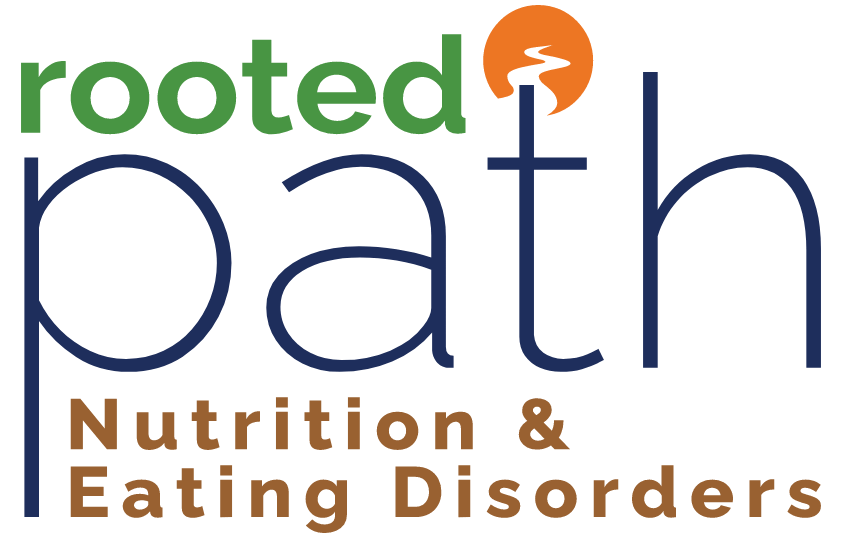The Health At Every Size™ (HAES) framework has grown in popularity over the decades, especially in the treatment of eating disorders. Despite the extensive research on the topic, HAES is often discredited based on myths and misunderstandings about its goals as a health care framework. The intention of this article is to dispel five of the most common HAES myths and provide a better understanding of what the HAES care model stands for.
What is HAES?
Originally founded around the 1970’s, the Health at Every Size movement was birthed as a result of the increasing prejudice experienced by fat people. Currently, the Association for Size Diversity and Health (ASDAH) is the organization responsible for keeping the HAES principles updated to reflect the current stigmas faced by those in larger bodies.
The HAES care model aims to make health accessible to all, regardless of body size. HAES recognizes that health is not simply the “absence of physical or mental illness, limitation, or disease. Rather, health exists on a continuum that varies with time and circumstance for each individual.”
HAES takes the focus off of weight and addresses the whole person within the context of their lives. HAES accepts body diversity and supports the idea that whatever a person’s body does as a result of improving health behaviors, is the right thing for that body, whether it involves weight loss or not.
The 5 HAES Principles
ASDAH defines the principles of HAES as follows:
- Weight Inclusivity – Accept and respect the inherent diversity of body shapes and sizes and reject the idealizing or pathologizing of specific weights.
- Health Enhancement – Support health policies that improve and equalize access to information and services, and personal practices that improve human well-being, including attention to individual physical, economic, social, spiritual, emotional and other needs.
- Respectful Care – Acknowledge our biases, and work to end weight discrimination, weight stigma, and weight bias. Provide information and services from an understanding that socio-economic status, race, gender, sexual orientation, age, and other identities impact weight stigma, and support environments that address these inequities.
- Eating for Welbeing – Promote flexible, individualized eating based on hunger, satiety, nutritional needs, and pleasure, rather than any externally regulated eating plan focused on weight control (such as a diet).
- Life Enhancing Movement – Support physical activities that allow people of all sizes, abilities, and interests to engage in enjoyable movement, to the degree that they choose and are physically able.
HAES Myths
With a better idea about what HAES entails, take a look at these common HAES myths and the truths behind them:
Myth 1: HAES claims that everyone is healthy at any size or weight.
Fact: HAES does not promote that everyone is healthy no matter their size.
For example, a weak and sick cancer patient would probably not be deemed healthy whether they were in a thin or fat body.
HAES advocates for the rejection of weight and BMI as indicators of health and encourages more reliable health measures be used such as blood pressure and heart rate, lab work, overall energy level and mood, presence of pain, and mental health.
Regardless of size, anyone has the ability to pursue health if that is what they choose. Health is not required in order to be treated with respect. People of all sizes struggle with illness and disease.
HAES encourages making positive health changes that are sustainable and improve quality of life, regardless of body size. At the same time, HAES acknowledges that health is not a finish line. It comes and goes over a person’s lifetime and we all have different levels of access to health and resources.
Myth 2: HAES promotes “unhealthy” body sizes.
Fact: HAES recognizes that human bodies are naturally diverse in size, shape and appearance.
Weight is more so determined by genetics and environment than the calories we eat (check out ASDAH’s fun Poodle Science video!). HAES encourages engaging in behaviors that promote overall health and does not consider “weight” a behavior.
In research, HAES randomized control trials (considered the gold standard research method) report participants from the HAES groups had significant improvement or maintenance of dietary quality and eating behaviors. Ironically, several large-scale studies have found a link between dieting and weight gain.
HAES is not anti-weight loss. HAES is anti-weight loss prescription. If weight loss occurs spontaneously from engaging in health promoting behaviors, it is considered a side effect.
Research indicates that when weight loss is the primary goal, people often discontinue healthy behaviors when they fail to lose weight.
HAES recognizes that around 95% of people cannot maintain weight loss in the long run and that there is no known safe or effective method to create sustainable weight loss.
Additionally, people pursuing weight loss (or trying to maintain thinness) are often engaging in disordered eating and/or exercise practices. This can lead to nutrient deficiencies, weight cycling, loss of muscle mass, mental illness, and eating disorders. This results in the opposite of health, regardless of body size.
Myth 3: HAES says to eat without any regard to nutrition.
Fact: The HAES paradigm promotes intuitive or attuned eating.
Intuitive Eating encourages eating in a way that allows a person to follow their internal cues for hunger and fullness.
Research conducted on Intuitive Eating has found that those who practice Intuitive Eating have improved nutrient intake, increased fruit and vegetable consumption, and eat a wider variety of foods.
Intuitive eaters are at decreased risk of disordered eating and eating disorders. They also tend to eat less when negative feelings arise (i.e., emotional eating) compared to chronic dieters.
Intuitive eaters are more aware of how food feels in their body. They eat in a way that feels good to them.
Myth 4: HAES promotes a sedentary lifestyle.
Fact: HAES promotes incorporating movement into everyday life but in a way that feels natural and enjoyable, as opposed to structured and forced.
HAES acknowledges that movement is beneficial for physical, mental, and emotional health. There is endless research supporting these claims. However, improving physical fitness and cardiovascular health has nothing to do with weight.
In this study, the non-diet group did not have weight loss yet they still produced similar improvements in metabolic fitness, psychology, and eating behaviors.
A person who wants to easily bend over to tie their shoes, walk up a flight of stairs without feeling winded, or be able to get up and down from the floor doesn’t need to lose weight to be able to do these things. They can use functional movement and train their body for life. Movement can be practiced by anyone and be beneficial no matter your size.
Myth 5: HAES is only for some people, definitely not for super fat people.
Fact: HAES is for everyone!
People of all sizes deserve to feel comfortable in their bodies, have access to equal and respectful healthcare, and nourish and move their bodies in a way that feels best for them.
Because weight and BMI do not indicate the degree of health a person has, they can focus on creating health promoting behaviors that improve symptoms and quality of life regardless of size or weight change.
As HAES practitioners, we consider more than just eating and exercise habits. We acknowledge the social determinants of health as other factors that could be limiting progress towards health goals and support our patients in reducing these barriers where they can.
Final Thoughts
The Health At Every Size model of health care is an ethical and safe way to manage health. Research on this model supports improvements in health regardless of weight change and is the only framework that does not incite weight stigma.
Shifting from a weight loss focus to a health-based focus can feel scary. It takes work to unlearn engrained weight bias and views of health. Consider working with a provider at Rooted Path to support you along the way.
Author: Brandy Minks, MS, RDN

